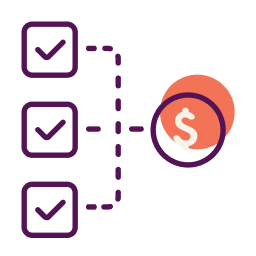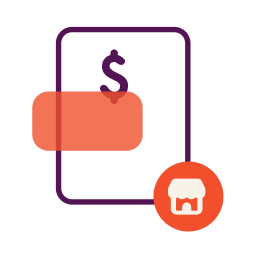A cash flow statement, also sometimes called a statement of cash flows, is one of a handful of financial reports that are essential for running a successful business—and one of the reports that you should be intimately familiar with as a business owner.
Where an income statement gives you an idea of your income and expenses and a balance sheet provides a snapshot of your assets, liabilities and owner’s equity, a cash flow statement is focused on your cash and cash equivalents—cash equivalents are other liquid assets that can be quickly converted into cash.
More specifically, it tells you where your cash and cash equivalents are coming from and how you’re spending them. A cash flow statement can help you spot potential financial threats to your business that aren’t apparent in other financial statements, so paying attention to yours should be a top priority.
Example of a Cash Flow Statement
Download our cash flow statement template to get started on yours.
Why do you need cash flow statements?
Even profitable businesses can have occasional cash flow problems. A cash flow statement provides insights into how well your business is doing at generating cash and using it to pay debts and cover operating expenses to help you forecast and avoid those problems.
In 1987, the Financial Accounting Standards Board made it mandatory for businesses to provide a cash flow statement under Generally Accepted Accounting Practices (GAAP). Here are some ways you can use a cash flow statement to support your small business.
Improve your cash position
A statement of cash flows provides information that you may not see in your income statement or balance sheet. For example, a balance sheet shows assets and liabilities, including line items like inventory, accounts receivable and accounts payable.
But your balance sheet shows the value of those line items on a specific date, and it doesn’t show how changes to each affect your cash position.
For example, if your accounts receivable balance increases, that negatively affects your cash position because there’s more money due that you haven’t collected. And if there’s a pattern, it could be a sign that you need to improve your accounts receivable collection methods.
The same goes for accounts payable. While it is a liability, an increase in your accounts payable balance is reflected positively in your cash flow statement because it means you’re holding onto your cash instead of paying it out—and the longer you control your cash, the more you can do to build your business.
As you look at your cash flow statement, consider how you can improve certain practices to improve your cash position.
Get a business loan
If you’re applying for a loan, you can use your cash flow statement to show the financial strength of your company.
Your cash position is important for business lenders because it tells them whether you have the cash flow required to make your payments on time. A strong cash position reduces the risk you pose to the lender, so it could help you not only get approved but also qualify for favorable loan terms.
Find an investor
If you’re seeking investors for your business, your cash flow statement, along with your other financial statements, gives prospective investors a clear picture of how you’re managing your cash position.
Even if your business is struggling in other areas, evidence of responsible cash flow management could be key to getting access to equity financing.
Sell your business
At some point, you may start looking for an exit strategy with your company. When that time comes, your cash flow statement will be a key factor in how potential buyers value your business.
As you take steps to use your statement of cash flows to improve your cash position and how you manage your business, you may be setting yourself up for a bigger payday if you decide to sell.
What is included in a cash flow statement?
A cash flow statement is broken down into three separate categories: cash flow from operations, cash flow from investing, and cash flow from financing. Here’s a summary of what’s included with each and how they affect your business.
Cash flow from operating activities
In this section, you’ll include all sources of cash from your regular business activities, along with expenses involved in running your business. That includes things like:
- Sales of goods and services
- Payroll expenses
- Changes to inventory
- Changes to accounts receivables
- Changes to accounts payable
- Insurance premiums
- Business taxes
- Depreciation and amortization
- Short-term debt payments
- Rent payments
Because every business is different, what you include in your cash flow from operating activities can vary from other businesses. For example, if you run an investment company, you’d also include sales of equities and bonds—something that would typically be included in the section for investing activities.
Also, note that short-term debt payments are included here rather than in the section for financing activities. This is because your current liabilities—amounts due to creditors within the next year—are key to your working capital, which is used for operating activities.
Positive operating cash flow shows that your company is generating the cash it needs for its core business activities. If your cash flow is negative, it’s an indicator that your business may be in trouble, and you might need financing to help bridge the gap.
Cash flow from investing activities
In this section, you’ll include how much cash you’re generating and using by making investments. That includes long-term physical assets, as well as marketable securities like stocks and bonds.
Examples of line items you’ll find in this section include:
- Purchases of physical assets
- Purchases of stocks, bonds or other securities
- Purchases of other businesses
- Loans your business has made to others
- Sales of physical assets
- Sales of stocks, bonds or other securities
- Loan payments you’ve received
When it comes to physical assets, that includes property, plant and equipment. You’ll also include any merger and acquisition activity here. In other words, if it involves investing in the future of your business, it’ll likely be included here.
Things that you might think are included but aren’t include interest payments and dividends, forms of equity financing, and depreciation of capital assets.
While positive cash flow from operations is typically a good thing, that may not be the case with your investing activities. In fact, negative cash flow from investing could be a sign that you’re investing heavily in the long-term success of your company. So if it’s positive, you may have some room to continue building your business.
Cash flow from financing activities
As the name of this section suggests, it includes the sources and expenses associated with funding the company. Depending on the size and goals of your company, this section may include things like:
- Proceeds from long-term debt such as loans or bonds
- Payments on long-term debt
- Issuance of stocks or equity
- Dividend payments
- Stock repurchasing
As you can see, these line items are all included in the broader terms of debt, equity and dividends. Your cash flow from financing activities provides the business owner and potential investors with an idea of how well you’re managing the company’s capital structure.
For example, if you’re constantly seeking out cash in the form of debt or equity, you may have positive cash flow from financing. But that could be a sign that you’re not generating enough cash from operations to handle the company’s needs.
How Cash Flow Is Calculated?
While you’ll include different line items within each section, you’ll also need to calculate the total net cash flow from each source, as well as in total. Here are the guidelines for how to do so:
Operating cash flow
This figure is determined by adding your funds from operations and changes to your working capital. If you want to break it down even further, use this formula:
Cash flow from operating activities
Net income + depreciation + adjustments to net income + changes in accounts receivables + changes in accounts payable + changes in inventories + changes in other operating activitiesInvesting cash flow
At a high level, you’ll calculate your cash flow from investing by adding up your gains and subtracting your losses from your various investments. For a more specific formula, use this:
Cash flow from investing activities
(Sales of physical assets + sales of stocks, bonds and other securities + sales of businesses + loan payments you’ve received) - (purchases of physical assets + purchases of stocks, bonds and other securities + purchases of other businesses + loans your business has made to others)Financing cash flow
Your cash flow from financing is determined by adding up the cash you’ve paid as dividends and loan payments and the repurchase of debt and equity, then subtract it from cash inflows from taking on debt and issuing equity.
For a more specific approach, consider using this formula:
Cash flow from financing activities
(Proceeds from long-term debt + issuance of stocks or equity) - (payments on long-term debt + dividend payments + cash paid to repurchase debt and equity)Total cash flow
Once you’ve calculated your cash flow in each of the three sections, you’ll then add up the totals for each to get the total net cash flow for your business.
While this tells you what your overall cash position is, a good cash flow analysis will dig deep into each section and the individual line items to see how they affect your overall financial strength.
How lenders assess cash flow
Your cash flow is a key indicator for lenders, providing them with an idea of your ability to pay back a loan. More specifically, a lender wants to make sure that your cash flow is enough to cover your current financial obligations and operational expenses, plus the costs of new debt.
In general, lenders are going to focus more on your cash flow from operations than the other sections. That’s because they want to know if you can repay your debts based on your net cash flow from operating activities alone.
In contrast, lenders may view your cash flow from financing and investing to get a general idea of how you’re managing your business’ cash position. But they may not include the net cash flow from either of these activities to determine your ability to repay the debt.
That’s because it doesn’t make sense to see whether you can make your debt payments by taking on more debt or by selling long-term assets and securities. These one-time transactions likely aren’t sustainable, whereas your cash flow from operations is.
Of course, lenders will also consider other factors, including your other financial statements, your business and personal credit history, a business plan and more. Your cash flow statement is just one piece of the puzzle.
The bottom line
Your cash flow statement is an important component of your company’s financials. Because your cash position is so important to the success and growth of your business, it’s crucial that you make sure the information included in your cash flow statement is accurate and up-to-date.
In some cases, you may need to work with an accountant—or hire one in-house—to ensure everything is done correctly.
Also, recognize that your cash flow statement may look different, depending on which stage your company is in. Startups, for instance, typically have positive cash flow from financing but may not have strong numbers for the other two. Then as the company takes off, you may start seeing positive cash flow from operations and negative cash flow from investing as you start using cash to invest in the growth of the business.
Once your company is well established, your cash flow can vary based on the success and goals of the business. As you analyze your cash flow, using an example cash flow statement or your own, look for potential threats to your business, as well as opportunities to continue its growth.
Learn more about your business’ credit scores with Nav. We can also help you apply for a small business loan or a business credit card in once place.
This article was originally written on October 18, 2019 and updated on February 3, 2023.



Have at it! We'd love to hear from you and encourage a lively discussion among our users. Please help us keep our site clean and protect yourself. Refrain from posting overtly promotional content, and avoid disclosing personal information such as bank account or phone numbers.
Reviews Disclosure: The responses below are not provided or commissioned by the credit card, financing and service companies that appear on this site. Responses have not been reviewed, approved or otherwise endorsed by the credit card, financing and service companies and it is not their responsibility to ensure all posts and/or questions are answered.